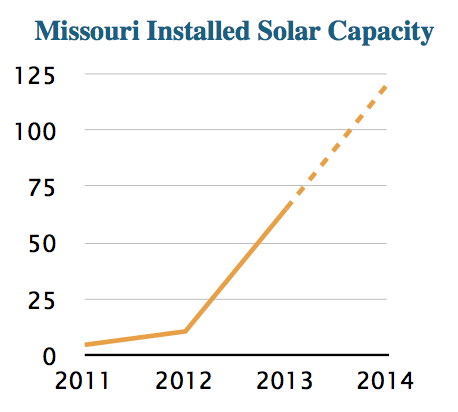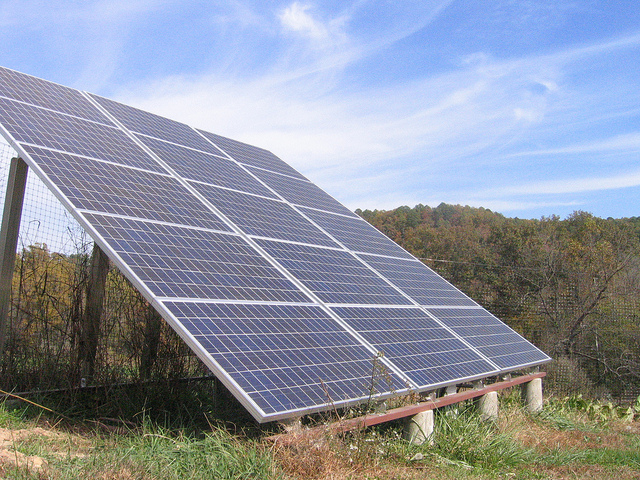What can solar power do for a single state? How about 21% of its energy, $14 billion in economic activity, and over 150,000 jobs. At a discount to existing electricity costs. Without subsidies.
That’s what solar power can do for Missouri, but the state’s utilities may be about to pull the plug on local solar power.
It started with a renewable energy standard, passed overwhelmingly in 2008, requiring the state’s utilities to get 15% of their electricity from renewable energy resources, and primarily from local sources. But attacks on the law started three years ago, when the Republican-controlled state legislature undermined the ‘buy local’ provision.
Fortunately, this didn’t stop local solar, helped along by a generous state rebate. Starting in 2011, the falling cost of solar panels led to a surge in installations. By the end of the year, the cumulative solar capacity (estimated at 120 megawatts) will have added $415 million to the state economy and nearly 4,000 jobs.

But utilities abruptly pulled the plug on solar in 2013. In the middle of the legislative session where a rebate phase-out was being carefully crafted, and despite assurances that they were nowhere near the cost cap on the solar rebate program, the state’s utilities announced the programs were allegedly running out of money. No independent analysis has verified the utilities’ claims.
Advocates reached a settlement with the utilities late in 2013 to pay out the remaining rebate funds, but efforts to re-open the compromise on a reduced solar rebate were sabotaged by the same utilities late in the 2014 legislative session. Now a lawsuit may be the only hope to avoid a big drop on the “solar coaster” when rebate payments stop.
Two years from now, this “bust” cycle may be just a bad memory, however. Electricity prices have been rising by 5% per year over the past 5 years. The maturing solar industry has been relentlessly driving costs down, and even without the rebate, by 2016 residential and commercial solar installations will able to compete with utility-provided electricity prices using just the 30% federal tax credit.
The smart policy would have been a “glide path” away from state incentives, but it may be that utilities just wanted to buy a couple years respite from competition.

For more information on Missouri’s solar challenge, see this presentation (below) given by ILSR’s Director of Democratic Energy to the Missouri Solar Energy Industries Association on February 1, 2014, and this short report on the solar industry’s economic benefit to the Show Me state.
[protected-iframe id=”236550563feb71352d0bf3772a68a302-5104299-27880469″ info=”http://www.slideshare.net/slideshow/embed_code/30765503″ width=”427″ height=”356″ frameborder=”0″ scrolling=”no” allowfullscreen=””]
Photo credit: SARE Outreach



